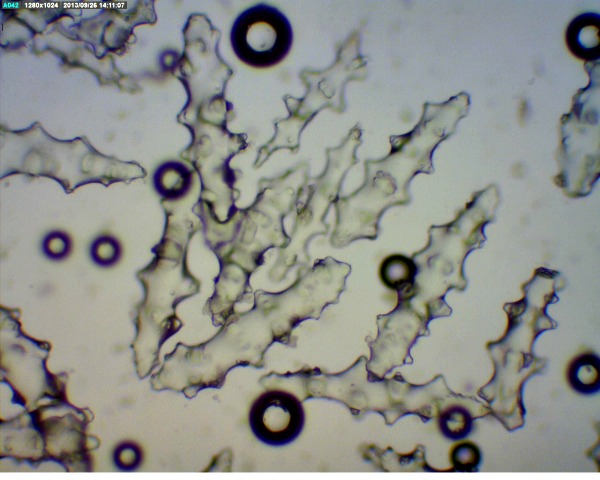Summary
Physical Description
Size Range
Colour
Ecology
External Association
Internal Association
Life History & Behaviour
Feeding
Reproduction
Gas Exchange & Excretion
Defence
Anatomy & Physiology
Anatomical Adaptation
Evolution & Systematics
Paleontological Evidence
Biogeographic Distribution
Conservation & Threats
References & Links | 
Leather corals' fleshy stalk with lobbed features and their brightly coloured body is no doubt an attractor for predators. Their fleshy stalk is high in protein, fats, and carbohydrates, which seems like a delightful meal for any organism in the reef considering reefs are known to be scarce in nutrients (Williams, 1993). Additionally, these corals do not have an effective nematocyst, as they are simple structure and small which are unable to penetrate the human skin and obviously are not able to run away since they are sessile (Fabricius & Alderslade, 2001). However, predation on this species is low.
There are two ways they defend them selves from being attacked: sclerites and toxic secondary metabolites.
Sclerites
Sclerites are located in the mesogloea of the coral, which is the fleshy stalk. They are skeletal elements that give support to the organism and is calcareous (Rao & Devi, 2003). These sclerites are difficult to dissolve therefore making it unfavourable for organisms to consume part of the coral. From experiments done, a pierce of S. ehrenbergi was placed in bleach and after few minutes only sclerites were left behind, showing low dissolving rate thus making it unpalatable for organism who are unable to cope with getting rid of sclerites.

Pic 1 Sclerites of Sarcophyton ehrenbergi.
Toxic secondary metabolites
Soft corals produce toxic secondary compounds called terpenes, and from Sarcophyton species a highly toxic compound is made called Sarcophytoxide (Williams,1993). Terpenes can be used for many purposes for different kinds of defence as well as communicating between other corals. There have been interest in recent studies regarding the Sarcophytoxide as well as other terpenes, regarding killing of certain cancer cells (Shaker et al., 2010)

Pic 2 Mucus scrapped from the surface of Sarcophyton ehrenbergi
Anti-feeding substances
The terpenes sarcophytoxide makes the fleshy body highly toxic as well as highly unpalatable. However, there are some organism that can able to tolerate and break down the toxin, but this is very rare.
Anti-fouling substances
Terpenes also works as an anti-fouling substances which prevent other organisms to grow or settle on the coral, such as fungi, algae, bacteria, other coral species, sponges, and other settlers. However terpenes can become poor in quality when water pollution is abundant and temperatures are high.
Allelopathic substances
Similar to allelopathic plants, Sarcophytons are able to release chemicals to the surrounding water column which prevents larvae to settle around them. This is beneficial to the organisms by avoiding space competition with other species that have a faster growth rate than the Sarcophyton ehrenbergi, as they are generally slow in growing.
Internal sunscreen
Sarcophyton can be found in shallow waters, therefore they are highly exposed to ultra violet rays, therefore protection against these rays are essential. Sarcophytons produces substances called mycosporine-like amino acid (MAA) which are amino acids that are able to absorb UV in a way to filter the UV rays before overly damaging the coral. Some organisms consume this MAA so use it as their own sunscreen.
Broadcast spawning
As Sarcophytons are sessile, sexual reproduction requires broadcast spawning for fertilisation, but constantly releasing eggs and sperm in hopes to be fertilised is too expensive. However by releasing these chemicals, Sarcophytons are able to synchronise with other Sarcophytons, as well as other coral species to increase their chances of fertilisation as well as lowering the chances of being eaten by other organisms such as fish. The chemical used is also terpenes more similar to the anti-fouling substances, however there have been some chemical modifications to be used for spawning, as there are little evidence regarding effects on fish when the eggs are eaten (Sammarco & Coll, 1992). |
|